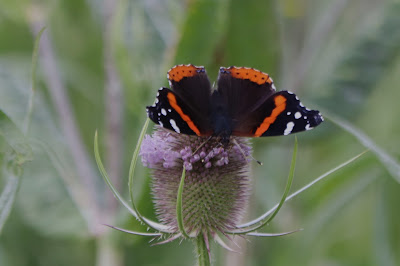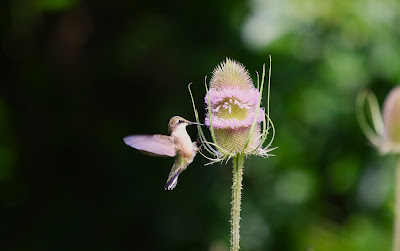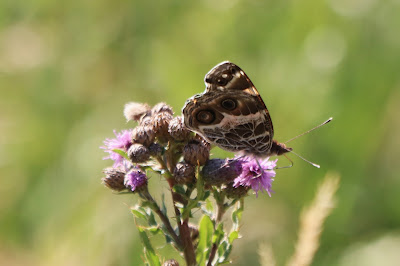Beautiful Butterflies!
Some of my recent favourites!
I didn't get to see any Common Buckeyes last year so am happy to have found a couple so far this year. They get their name from the bright and colourful eye-like markings on each of the wings. These eyespots are an adaptation to scare away their predators. The adults live from 6-20 days. www.butterflyidentifcation.com/common-buckeye.htm
American Lady on Knapweed
Black Swallowtail: This species is a noted "hill topper" among Ontario Swallowtails with males gathering and patrolling around the highest point of land awaiting females who usually ascend the nearest hill upon emerging. They have two generations per year. The ROM Field Guide to Butterflies of Ontario, Peter W. Hall et al.
Eastern Tiger Swallowtail on Common Teasel
Tiger Swallowtails are avid mud puddlers that can sometimes be seen up close when sipping moisture and minerals from the ground. The ROM Field Guide to Butterflies of Ontario, Peter W. Hall et al. I photographed this individual at a small pond in Canatara that is drying up from the recent drought conditions.




















































